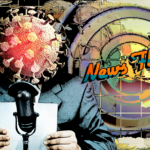The opportunity to combat social media misinformation and disinformation using the coming National Health Literacy Strategy is too good to squander, the association says.
A new strategy set to target the 60% of Australians who are unable to fully understand commonly seen health information doesn’t do enough to target digital media, according to the AMA.
“We know the government does want to do what it can to improve health literacy and to make sure that health messages are getting out clearly,” AMA vice-president Dr Danielle McMullen said.
“But government bodies can sometimes get stuck in pen and paper and we are encouraging them to do more online.”
The National Health Literacy Strategy is one of the eight priority areas of the National Preventive Health Strategy and is based on the idea that a poor understanding of health leads to poor access to healthcare, lower uptake of services and worse patient outcomes.
Covid-19 has made this more apparent than ever, according to the draft consultation of the literacy strategy.
“The covid information environment has not always met the language or health literacy needs of diverse communities in Australia,” it reads.
“This has been associated with reduced covid knowledge and prevention behaviours.”
Currently, the government estimates that around six in every 10 Australians are unable to fully comprehend basic information, such as instructions about correct medicine use.
The consultation draft, which was released in October, focuses on achieving three broad goals:
- Systems, policies and practices within and across sectors support an effective health literacy environment.
- All Australians can access health information that is easy to understand, trustworthy and culturally appropriate.
- All Australians have the skills to find and use reliable health information across the varied media they use.
While the third aim seeks to recognise “varied media”, the strategy actually argues against a significant focus on digital media, highlighting that many marginalised communities – Indigenous Australians, culturally and linguistically diverse Australians and people with disability – “experience significant barriers accessing digital information and services”.
In its submission to the draft, the AMA builds a case for adding specific reference on how to dispel and respond to the type of medical misinformation that “flourishes through digital media”.
“The AMA suggests that more emphasis is needed on the role of the media and its role in mobilising accessible and accurate health information,” it said.
“During the covid pandemic, we have seen that all forms of media have significant capacity to disseminate health information to the general public.”
The association also recommends that social media companies work actively to counter health misinformation on their platforms.
“With this media capacity, comes the risk of false information being perpetuated and targeted at the vulnerable, those with poor health literacy skills,” the submission reads.
“The National Health Literacy Strategy needs to make sure all media sources are included, as an important component of improving health literacy, with media outlets being an important partner in the implementation of the strategy.”





